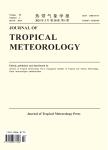Monitoring Sea Fog over the Yellow Sea and Bohai Bay Based on Deep Convolutional Neural Network
作者机构:National Meteorological Center Key Laboratory of South China Sea Meteorological Disaster Prevention and Mitigation of Hainan Province Shanghai Typhoon InstituteChina Meteorological Administration Agronomy College Shenyang Agricultural University Key Laboratory of Numerical Modeling for Tropical CyclonesChina Meteorological Administration State Key Laboratory of Severe Weather Chinese Academy of Meteorological Sciences
出 版 物:《Journal of Tropical Meteorology》 (热带气象学报(英文版))
年 卷 期:2024年第3期
页 面:223-229页
学科分类:07[理学] 070601[理学-气象学] 0706[理学-大气科学]
基 金:National Key R&D Program of China (2021YFC3000905) Open Research Program of the State Key Laboratory of Severe Weather (2022LASW-B09) National Natural Science Foundation of China (42375010)
摘 要:In this paper, we utilized the deep convolutional neural network D-Link Net, a model for semantic segmentation,to analyze the Himawari-8 satellite data captured from 16 channels at a spatial resolution of 0.5 km, with a focus on the area over the Yellow Sea and the Bohai Sea(32°–42°N, 117°–127°E). The objective was to develop an algorithm for fusing and segmenting multi-channel images from geostationary meteorological satellites, specifically for monitoring sea fog in this region. Firstly, the extreme gradient boosting algorithm was adopted to evaluate the data from the 16 channels of the Himawari-8 satellite for sea fog detection, and we found that the top three channels in order of importance were channels 3,4, and 14, which were fused into false color daytime images, while channels 7, 13, and 15 were fused into false color nighttime images. Secondly, the simple linear iterative super-pixel clustering algorithm was used for the pixel-level segmentation of false color images, and based on super-pixel blocks, manual sea-fog annotation was performed to obtain fine-grained annotation labels. The deep convolutional neural network D-Link Net was built on the Res Net backbone and the dilated convolutional layers with direct connections were added in the central part to form a string-and-combine structure with five branches having different depths and receptive fields. Results show that the accuracy rate of fog area(proportion of detected real fog to detected fog) was 66.5%, the recognition rate of fog zone(proportion of detected real fog to real fog or cloud cover) was 51.9%, and the detection accuracy rate(proportion of samples detected correctly to total samples) was 93.2%.



